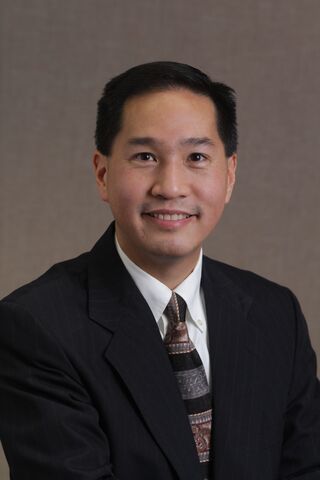Suicide
Grasping the Complicated Grief of a Suicide
An interview with Dr. Al Hsu on grief and trauma for suicide survivors.
Posted June 16, 2020

Suicide always leaves behind immediate survivors—relatives, friends, close relationships—who deal with complicated grief. The subject of suicide is often taboo, leading to the bereaved grieving alone. It is important to honor these stories of grief and provide space for listening and sharing.
Al Hsu (pronounced “shee”) is senior editor at InterVarsity Press, where he acquires and develops books on culture, faith, justice, and spirituality. He holds a Ph.D. from Trinity Evangelical Divinity School and is the author of Grieving a Suicide: A Loved One’s Search for Comfort, Answers and Hope. He lives in the Chicago suburbs with his wife and sons.
JA: Why did you set out to write your book?
AH: Every year, some 48,000 people in the United States die by suicide. Each one leaves behind an average of 6 to 10 immediate survivors—spouses, parents, children, and other loved ones who are deeply affected by the loss. That’s hundreds of thousands of people every year who are experiencing this particular kind of grief.
I’m one of those survivors; I lost my father to suicide. He was a Ph.D., a brilliant electrical engineer who designed satellite technology. But one day he experienced a stroke, and while he survived the stroke, one of the effects was that he became very depressed. He lost all sense of hope and felt that he couldn’t go on. One night, he went to his room, closed the door, and killed himself. He was 58 years old.
So I wrote my book to chronicle the realities of suicide loss and how this kind of grief differs from others. It grew out of research on the dynamics of suicide as well as how faith traditions have not always provided helpful responses to those grieving. It’s also an effort to rediscover how the resources of the Christian faith provide comfort, community, and hope to those left behind.
JA: What is the primary takeaway you hope readers will learn from reading your book?
AH: The first thing survivors should know is that they are not alone in this loss. Societal stigma often isolates grievers and makes them think that no one else could possibly understand such an unimaginable loss. But survivors can find companions on the journey who have also traveled this same painful path. Others have survived this loss, and they can too.
It can be helpful to name for survivors that suicide loss is a complicated bereavement. Grievers are experiencing two realities, both grief and trauma. The grief would be difficult enough on its own. But the trauma of suicide complicates the grief, heightens and intensifies it, and damages our capacity to respond. Those who lose a loved one to suicide are traumatized on par with that of soldiers in warfare with PTSD. Recognizing the trauma is part of the journey toward healing.
The other thing that survivors want other survivors to know is that the suicide was not their fault. Survivor’s guilt is very common in suicide loss; we are haunted by the never-ending “what ifs” and “if onlys.” But survivor’s guilt is a false guilt. Whatever the reasons might have been, our loved ones ultimately made their own choice to take their own lives. They did not do so because of us or to hurt us; their focus was on ending their own pain. We survivors can let go of our sense of guilt and responsibility for the death.
JA: What are some lessons from your book that can help people live more resiliently?
AH: I found it reassuring to learn that children of a parent who died by suicide for the most part were quite resilient and went on to live ordinary, functional lives. All of us who are suicide survivors are automatically at a higher risk for suicide ourselves, and some do fall into unhealthy patterns of substance abuse or other self-harm behaviors. But we survivors can also learn from our loved one’s loss and resolve not to repeat those patterns in ourselves.
In my Asian American family, cultural shame meant that we never talked about things like depression or mental illness. And after a suicide, the temptation is to never speak of it, because the suicide is seen as bringing shame to the family. But recognizing these cultural dynamics can help us break the silence and help one another get the support we need.
When I was writing the book, I asked my mother if it was okay that I was exploring these issues and talking about our family history. She gave me her blessing and said, “Your father never talked about anything like this. He kept it bottled up inside. I’m glad you can talk about it; that’s healthier.”
Ultimately, we do not grieve well alone. All of us need friends and family where we can grieve and heal in the context of community, whether in churches and faith communities or in survivor groups or other grief/loss groups. Suicide usually happens in isolation; surviving and healing take place in community.
JA: What are some insights from your book that help readers support a friend or loved one?
AH: Please do not jump to giving pat answers. Rather than saying clichés about how “God has a plan” or “what doesn’t kill you makes you stronger,” it’s better to simply be present with the grieving and let them grieve in whatever ways are best for their grief process. Invite them out for coffee or to share stories they want to remember about their loved one. Often suicide comes at the end of a long journey of mental illness, and the family may have painful recent experiences of their loved one. It can be helpful and healing to recover memories of happier times, to honor the good and best about them.
JA: Anything else you would like to share?
AH: Healing is an ongoing journey. We are never fully healed, and the impact of our loved one’s suicide will remain with us for the rest of our lives. But one of the paradoxes of suicide loss is that our encounter with death can turn us back toward life. Many survivors express their healing and resilience in ways that bring hope and flourishing to others. I think of Kay Warren, who lost her son Matthew to suicide, but in the years since has helped churches across the country grow in mental health awareness and suicide prevention efforts. In the Christian tradition, crucifixion is followed by resurrection. While we grieve the enormity of our loss, we live on in hope of life, and we celebrate that death does not have the final word.
To find a therapist, please visit the Psychology Today Therapy Directory.
References
Hsu, A. Y. (2017). Grieving a Suicide: A Loved One’s Search for Comfort, Answers and Hope. Intervarsity Press.




